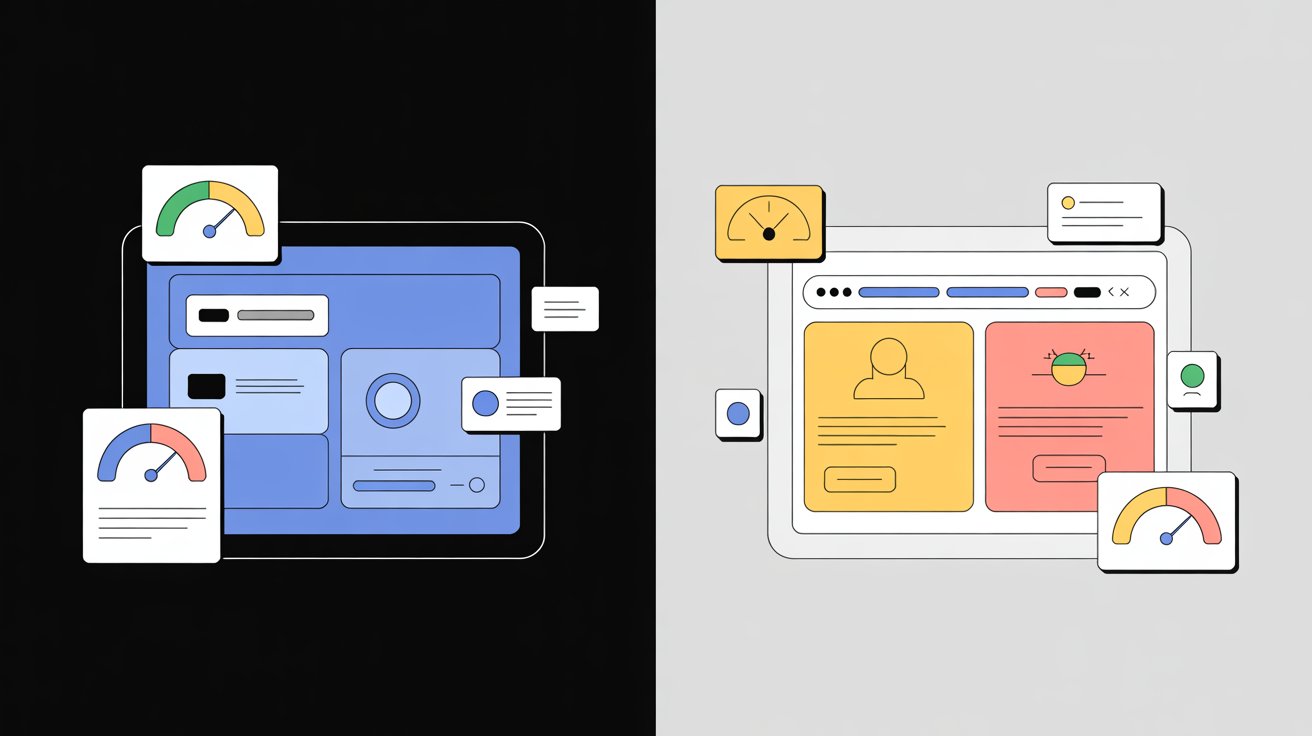
June 23, 2025
AI Website Builders vs. Manual Design: Which Earns More Trust?
In the age of automation, AI-powered website builders are reshaping how the internet looks and feels. From one-click layouts to automated color palettes and content generation, tools like Wix ADI, Framer AI, and Bookmark have made launching a website faster and easier than ever.
But one critical question remains: Do users actually trust AI-generated websites as much as manually designed ones?
As digital trust becomes a key currency online, the way a site is built—and perceived—can significantly affect how users interact with it, whether they stay, and if they ultimately convert.
The Rise of AI Website Builders
AI website builders are designed to help users—especially non-designers—build attractive, functional websites using:
- Pre-trained design algorithms
- Drag-and-drop interfaces
- Generative AI content
- Real-time layout suggestions
- Automatic mobile responsiveness
They promise speed, simplicity, and style. But what they often lack is the nuance and intent of a manual design process.
What Users Say: First Impressions and Subconscious Bias
🤖 AI-Built Websites: Fast, Polished—but Generic?
Many AI-generated websites have a sleek, templated look. While this makes them easy to use, it also raises red flags among users looking for authenticity and originality.
Common perceptions include:
- “This looks nice, but it feels impersonal.”
- “Is this a real business or a scam using a template?”
- “Everything looks the same—where’s the soul?”
AI designs often optimize for symmetry and consistency, but they may fall short on emotional resonance, a key ingredient in building trust.
👤 Manually Designed Sites: Personal, Imperfect—but Trustworthy?
Human-crafted sites might contain imperfections—quirky layouts, unique typography, or personalized messaging. Ironically, these imperfections often enhance trust. They suggest:
- A real person built this
- There’s someone behind the brand
- The content is tailored and thought through
While a bad manual design can repel users, a well-crafted one—even if simple—can communicate intent and identity far better than a polished but generic AI layout.
What the Research Says About Design and Trust
Studies in UX psychology have shown that users form opinions about websites within 0.05 seconds—almost instantly. But beyond first impressions, what sustains trust is:
- Consistency with brand identity
- Visual hierarchy that makes navigation intuitive
- Design elements that match the content’s tone
- Signs of human curation or customization
AI builders tend to optimize for generic aesthetics, but often fail to match contextual cues—like tone of voice, cultural nuances, or trust signals (e.g., verified badges, customer support transparency).
Trust Signals Often Missing in AI-Built Sites
AI tools may check the box for structure, but they can miss out on trust-centric features like:
- Personalized testimonials
- Real-time customer chat integrations
- Subtle cues like handwritten signatures or story-based About pages
- Accessibility customization
- Genuine community sections, reviews, or user-generated content
These “human fingerprints” help users believe that a site is more than a digital façade—it’s a trustworthy destination.
Performance vs. Perception: Do Users Really Notice?
In blind tests, users often can’t tell if a site is AI-built. But when told after the fact, many report reduced trust in sites created entirely by machines—especially for:
- Medical services
- Financial platforms
- Legal information
- E-commerce stores
Why? Because people still associate human expertise with care, ethics, and accountability—traits that matter deeply in trust-based industries.
When AI Works Best
To be clear, AI website builders aren’t inherently untrustworthy. In fact, they’re ideal for:
- Rapid MVP development
- Small portfolio sites
- Personal blogs or event pages
- Local service listings
They shine when speed and visual appeal are more important than deep personalization or nuanced storytelling.
Hybrid Approach: The Best of Both Worlds?
Many designers now use AI to build wireframes or starter layouts, then customize them manually. This hybrid model brings:
- The efficiency of automation
- The authenticity of human oversight
- The adaptability of no-code platforms
- The trust factor of intentional design decisions
Platforms like Framer, Webflow, and Editor X allow deep customization, empowering designers to layer brand personality on top of AI foundations.
How Platforms Like Wyrloop Can Help
At Wyrloop, trust is everything. We believe reviews should reflect not just content or service—but also design credibility. By encouraging reviewers to rate websites based on factors like:
- Design originality
- Clarity and usability
- Perceived authenticity
- Customization efforts
…users can better understand the trust signals behind the pixels.
Final Thoughts
In the battle between AI website builders and manual design, it’s not about which is better—it’s about which earns trust more effectively in the eyes of the user.
AI might get you online faster. But authenticity, effort, and human expression are still the cornerstones of digital trust in 2025. The most effective websites often balance automation with humanity.
🙋 CTA
Building a website with AI tools?
Make sure it reflects more than just structure—build in trust. Read design-based reviews or leave your own insights on Wyrloop today.